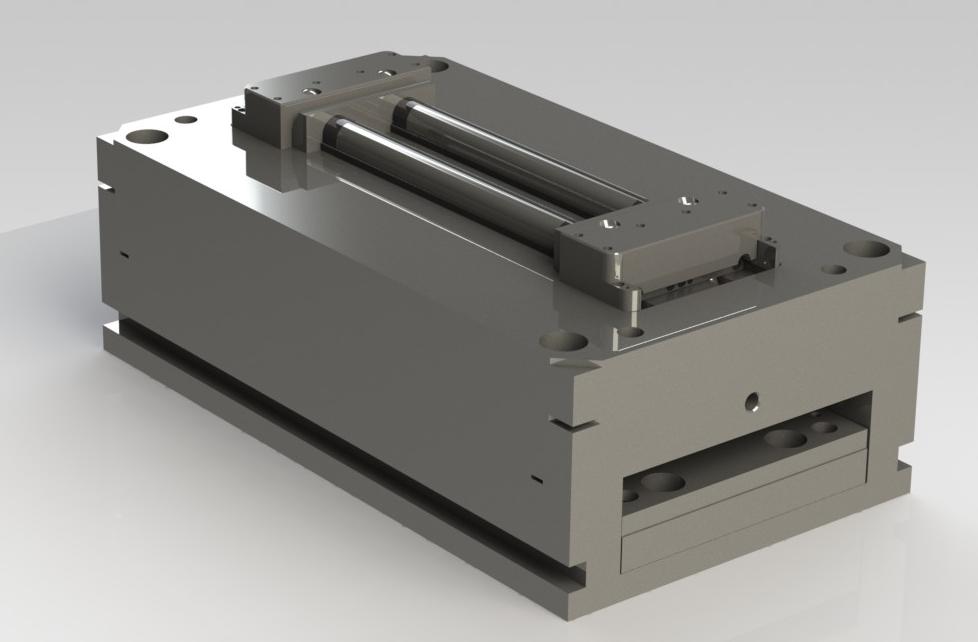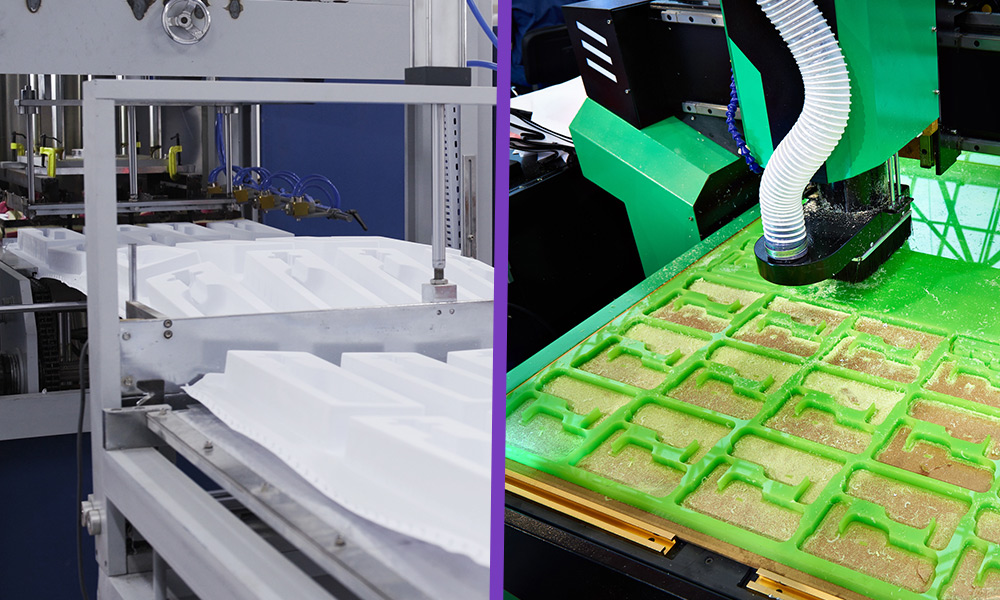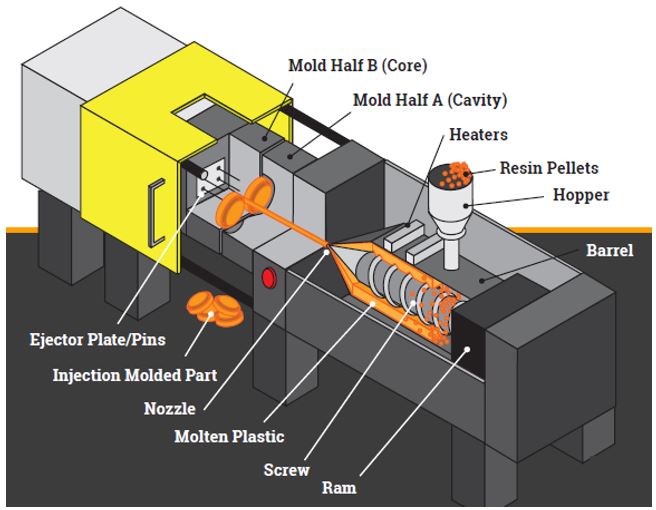The Duty of Plastic Injection Molding in Creating Cost-efficient Industrial Parts
The Duty of Plastic Injection Molding in Creating Cost-efficient Industrial Parts
Blog Article
The Future of Plastic Injection Molding: Innovations and patterns to View
As the plastic shot molding market progresses, a number of crucial fads are arising that assurance to improve its landscape. Automation and smart production techniques are set to improve efficiency, while the change towards sustainable products shows a growing ecological consciousness. Furthermore, developments in 3D printing are leading the way for extraordinary layout adaptability. However, these technologies additionally come up with challenges that call for mindful consideration. Understanding exactly how these components will certainly engage and influence future methods is crucial for stakeholders aiming to navigate this transformative period successfully.
Automation and Smart Manufacturing
As the plastic shot molding market progresses, automation and wise production are taking center stage, revolutionizing manufacturing procedures - Plastic Injection Molding. The integration of advanced innovations such as robotics, IoT (Web of Points), and synthetic intelligence is making it possible for suppliers to boost effectiveness, decrease functional costs, and boost product quality. Automated systems streamline workflows, lessening hand-operated treatment and raising throughput, which is essential in satisfying the increasing demand for fast manufacturing cycles
Smart manufacturing innovations help with real-time surveillance and data evaluation, allowing companies to maximize machine efficiency and anticipate maintenance needs. This proactive technique not only reduces downtime but likewise extends the life expectancy of tools. The usage of collaborative robots, or cobots, enhances the adaptability of production lines, allowing employees and machines to operate side by side securely and efficiently.
The adoption of automation in plastic injection molding is not just a trend yet a tactical important for organizations aiming to stay competitive in an international market. By utilizing these modern technologies, suppliers can achieve greater accuracy, decrease waste, and adapt swiftly to altering client demands, positioning themselves for sustainable growth in a progressively computerized future.
Lasting Products and Practices
The press towards automation and smart manufacturing has led the way for a higher focus on lasting materials and practices within the plastic shot molding industry. Companies are increasingly looking for eco-friendly choices to traditional petroleum-based plastics, leading to the adoption of bio-based and recycled materials. These lasting materials not just minimize ecological effect yet also align with consumer demand for greener products.

Furthermore, collaboration between makers, material suppliers, and environmental organizations is promoting technology in the development of lasting products that fulfill efficiency standards without endangering top quality. As regulations around plastic usage come to be stricter, the market is positioned to adjust by welcoming these sustainable techniques, making sure lasting feasibility and reducing reliance on non-renewable sources. The combination of sustainability right into plastic shot molding is not merely a trend; it is becoming an important component of corporate duty and operational quality.
Breakthroughs in 3D Printing
Recent innovations in 3D printing modern technology visit the site are significantly changing the landscape of plastic injection molding. As soon as challenging or impossible to attain with conventional approaches, the combination of additive production procedures permits for the fast prototyping of complex geometries that were. This capacity not only speeds up item growth cycles however additionally decreases product waste, straightening with the growing demand for sustainable production techniques
Furthermore, the appearance of hybrid manufacturing methods, find out here now which incorporate 3D printing and shot molding, provides suppliers the capability to develop intricate designs while maintaining the efficiency of mass production. This technique enables the production of customized parts tailored to certain client needs without giving up the rate and scalability that shot molding gives.
In addition, advancements in materials, such as high-performance polymers and compounds especially created for 3D printing, are boosting the practical capabilities of published elements. These materials can endure greater tension and exhibit boosted thermal residential properties, making them suitable for more demanding applications.
As 3D printing proceeds to evolve, its assimilation into plastic shot molding processes promises to enhance productivity, lower costs, and foster development in product design, positioning makers to better fulfill the challenges of a competitive market.
Information Analytics and IoT Integration
Data analytics and the integration of the Internet of Points (IoT) are revolutionizing plastic injection molding by supplying manufacturers with unprecedented insights into their procedures. By leveraging real-time data collected from interconnected devices and sensing units, suppliers can keep an eye on efficiency metrics, identify inadequacies, and optimize production procedures. This data-driven approach promotes predictive maintenance, lowering downtime and prolonging equipment life expectancy.
In addition, IoT assimilation permits enhanced high quality control. By continually tracking variables such as stress, temperature, and cycle times, makers can quickly spot variances from established specifications and make adjustments in actual time. This not just enhances item consistency but additionally lowers waste and scrap find out this here prices.
The fusion of information analytics and IoT innovations also equips suppliers to adopt even more nimble manufacturing methods. With accessibility to detailed data analytics, companies can respond to market demands with better flexibility, readjusting production schedules and arrangements as needed. This flexibility is necessary in a swiftly transforming production landscape.

Personalization and Design Adaptability
Exactly how can modification and design adaptability boost the competitiveness of plastic injection molding? In a significantly diverse market, the capability to provide customized services is critical. Modification allows manufacturers to satisfy specific client requirements, accommodating special measurements, shapes, and capabilities that common items may not satisfy. This flexibility not only fosters customer commitment yet also opens up opportunities for brand-new organization chances throughout different sectors, from vehicle to customer goods.
Advancements in layout technologies, such as computer-aided design (CAD) and rapid prototyping, further reinforce this trend. These tools allow designers to produce detailed patterns and complicated geometries, which can be flawlessly incorporated into the production process. Because of this, producers can respond swiftly to changing customer preferences and market needs.
Additionally, the execution of modular tooling systems enhances layout versatility, permitting for quicker modifications in between various item designs without considerable downtime. This versatility can lead to lowered lead times and reduced production costs, making firms much more dexterous and competitive. Ultimately, accepting customization and design flexibility in plastic injection molding not just boosts product offerings however likewise enhances market positioning in an ever-evolving landscape.
Conclusion
The future of plastic shot molding is characterized by considerable improvements in automation, lasting methods, and innovative materials. The assimilation of IoT and data analytics will certainly improve functional performance and predictive upkeep. Additionally, the fostering of recycled and bio-based products, together with progress in 3D printing, will certainly foster sustainability within the market. Customization with modular tooling and quick prototyping will allow suppliers to remain competitive and responsive to the vibrant demands of the market.

The future of plastic injection molding is defined by significant advancements in automation, lasting techniques, and innovative materials.
Report this page